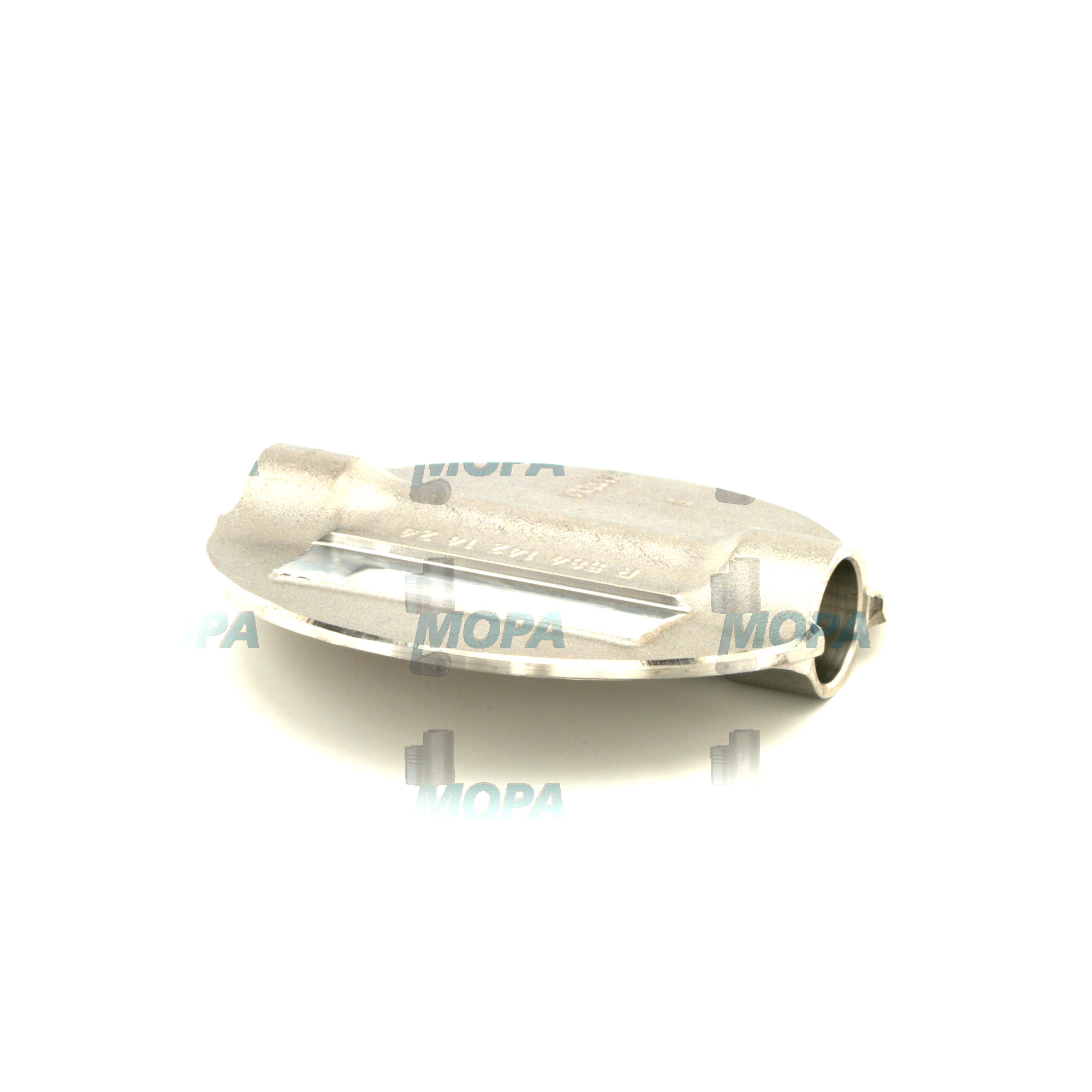EXHAUST FLAP and Exhaust System Solutions for Marine and Diesel Engines
The exhaust system is a critical assembly that routes combustion gases safely away from the engine, manages backpressure, reduces noise, protects equipment from heat, and supports emissions control. In marine and industrial diesel applications, it includes manifolds, turbocharger outlets, piping, silencers, expansion joints, catalysts, sensors, and hardware such as the EXHAUST FLAP. Together, these components protect the power unit, the vessel or plant, and personnel—while ensuring stable performance and compliance with class and environmental requirements.
Technical function of the exhaust system with EXHAUST FLAP in marine and diesel engines
In a diesel engine or gas engine, the exhaust system begins at the manifold and turbocharger outlet. Hot gases are directed through a carefully sized network of pipes, bends, and silencers. The objectives are to preserve turbine efficiency, minimize pressure losses, manage thermal loads, attenuate noise, and prepare the gas stream for aftertreatment (DOC/DPF/SCR). The EXHAUST FLAP plays a pivotal role in multiple layouts: in a marine engine wet exhaust it prevents seawater backflow into cylinders; in dry systems it can isolate lines during shutdown, support changeover between parallel silencers, or serve as a bypass to help bring aftertreatment to operating temperature. In OEM parts configurations, control of the EXHAUST FLAP is integrated with engine management to coordinate timing with turbo speed, backpressure, and gas temperature.
Properly engineered exhaust geometry stabilizes scavenging and turbocharger operation. Smooth transitions, correct diameters, and low-resistance silencers keep backpressure within the thresholds specified by the engine maker. If an EXHAUST FLAP for a marine engine sticks or leaks, it can introduce pressure fluctuations and water ingress risks. If it closes too early on a diesel engine, it can elevate exhaust temperature and turbine load. Material selection matters as well: high-temperature stainless steels (e.g., heat-resistant austenitic grades) for dry sections and corrosion-resistant alloys for wet sections ensure long life under thermal cycling, vibration, and condensate or seawater exposure.
- · Controls backpressure to protect power and fuel efficiency.
- · Shields the turbocharger from thermal and pressure shocks.
- · Reduces noise for crew comfort and regulatory compliance.
- · Prevents water ingress with a correctly operating EXHAUST FLAP.
- · Supports emissions systems by stabilizing gas temperature and flow.
- · Uses materials and joints designed for vibration and thermal expansion.
Why the exhaust system is crucial for engine reliability and service life
Reliability starts with controlled exhaust backpressure and temperature. Excessive backpressure forces the engine to work harder to expel gases, cutting power and increasing specific fuel consumption. Persistent overload can cause exhaust valve burning, manifold cracking, and turbocharger overspeed or bearing distress. A degraded EXHAUST FLAP can rattle, leak, or seize; in a marine engine this can allow seawater to travel upstream during roll or reverse thrust, leading to hydrolock, pitting, or rapid corrosion of cylinders and turbo hardware.
Thermal management is another key factor. Insulation, lagging, and correctly sized silencers lower surface temperatures, preventing heat soak into nearby cables and equipment. Poor insulation or damaged bellows exposes the engine room to hot spots, increasing fire risk and accelerating degradation of hoses and wiring. Furthermore, an unstable exhaust flow undermines emissions efficiency—aftertreatment requires predictable temperature and flow to perform, and malfunctions can trigger derates or shutdowns. Routine inspections of the EXHAUST FLAP, expansion joints, and support brackets are therefore essential to maintain alignment, prevent vibration fatigue, and protect the engine’s service life.
Advantages of OEM spare parts suitable for the exhaust system and EXHAUST FLAP
Using OEM spare parts suitable for the exhaust system preserves the engineered relationship between diameters, flow coefficients, actuator response times, and corrosion resistance. Precision-matched EXHAUST FLAP assemblies for diesel engine and marine engine applications ensure the correct sealing geometry, shaft materials, and actuator torque—critical for backflow prevention, low leakage, and reliable cycling under soot and salt exposure. Fasteners, gaskets, bellows, and silencers built to OEM specifications fit correctly the first time, reducing installation hours and the risk of leaks.
From a budget perspective, correctly matched components reduce downstream costs: stable backpressure protects turbochargers, prevents unplanned fuel penalties, and extends maintenance intervals on aftertreatment. Consistent materials and coatings resist chloride stress and high-temperature oxidation, limiting replacement frequency. In short, OEM parts help secure performance, reliability, and lifecycle value of the entire exhaust line—especially where the EXHAUST FLAP interacts with safety-critical functions.
How OEM parts for EXHAUST FLAP benefit marine and industrial operations
When the EXHAUST FLAP is sourced as OEM parts, actuator calibration matches engine logic, ensuring precise opening angles and response times. Seal faces and bearings are selected to withstand wet exhaust droplets or dry soot abrasion, while flanges align perfectly with manifold outlets and silencers. This compatibility reduces commissioning issues, minimizes vibration, and keeps emissions strategies stable during load changes.
MOPA as your partner for OEM spare parts: Exhaust system and EXHAUST FLAP
MOPA is a reliable partner for OEM spare parts for the exhaust system, including the EXHAUST FLAP and related components such as expansion joints, silencers, mixers, and clamps. We support purchasers, shipowners, and technical decision-makers with fast sourcing, rigorous quality control, and secure logistics for diesel and gas engines. Our team understands backpressure limits, material requirements for wet and dry layouts, and the interface between exhaust hardware and engine controls—so you receive components that install cleanly and perform as expected.
With MOPA, you benefit from speed in quotation and delivery, consistent part quality, and confidence in the supply chain. Whether you are maintaining a high-power marine engine or an industrial diesel generator, we help you assemble exhaust lines that protect your turbocharger, stabilize emissions, and keep your operation running.
Conclusion
The exhaust system is fundamental to engine safety, performance, and emissions, and the EXHAUST FLAP is a small part with an outsized role in protecting marine and diesel engines from backpressure fluctuations and water ingress. OEM spare parts suitable for the exhaust system secure fit, material integrity, and functional precision—delivering reliability, efficiency, and a longer service life for your asset.



